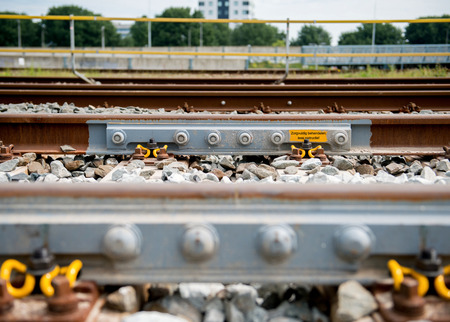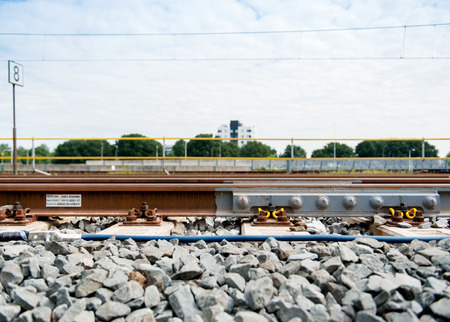NRG Insulated Rail Joint
Next generation high performance insulated rail joint
Next generation high performance insulated rail joint


For the purpose of safe signal control in rail networks, insulated rail joints are used to determine the position of the train. However, while these joints are highly important, they are also vulnerable. As a result, they quite frequently malfunction. Therefore, a new glued insulated rail joint has been designed, which had to comply with a multitude of requirements. These issues were successfully tackled, and have result into a new and innovative high-performance product that will dramatically improve the flawless functioning of the of railway infrastructure.
A completely refurbished design and the development of various new technical elements have resulted in a model with a remarkable lifespan. In addition, the glued insulated rail joint is able to completely absorb the wave motions of the rail ensuing from the driving dynamics of the train. It moves, so to speak, in the same way as the rail, a property which has formed the basis for our new product’s name: eNeRGy joint (hereafter NRG joint).
Its high quality has been convincingly demonstrated by the results of multiple extensive experiments, known to be the toughest in the world. An unprecedented amount of bending and tensile tests has shown that NRG joints can be exposed to extreme forces for prolonged periods of time. A bending test demonstrated that the NRG joint is capable of withstanding more than 10 million deflections of 3 mm with a force of 190kN. In practice, the track only makes a 1.2 mm deflection at an allowable axle load of 22.5-25 tons. No other type of insulated rail joint has ever shown these results, which means that the NRG-joint outperforms all of them.
Furthermore, the insulating coating prevents iron grinding chips and splinters from sticking to the foot of the rail. In this way, unwanted current conductivity is avoided.
In short, our high-performance NRG joint is the optimum tool for electrically separating the track into sections. This implies that interruption of train movements is no longer an issue. Trains can move safely and comfortably along the track, and the longer service life of the NRG joint considerably reduces the number of unexpected malfunctions.